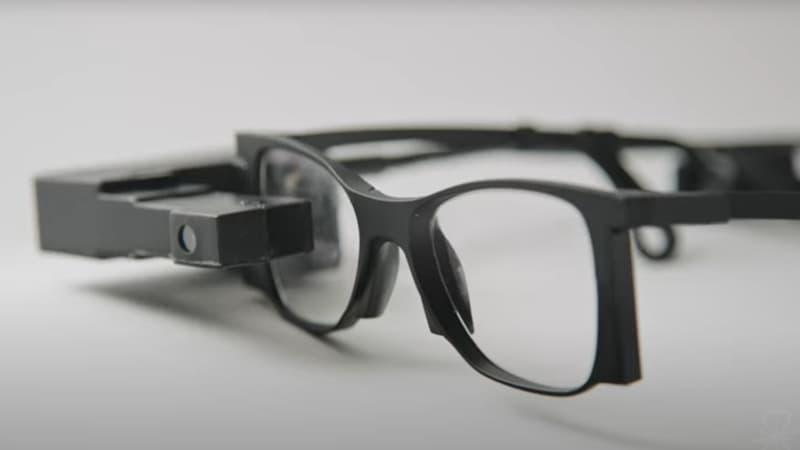Help people who are losing their sight see better or see again. This is what an international team of researchers has done, involving the Vision Institute (Inserm, CNRS and Sorbonne University), the Adolphe de Rothschild Foundation, the National Hospital for young people aged 15 to 20, Stanford University and the Stanford Corporation.
Together they designed a neurostimulation system to restore vision in people with age-related macular degeneration (AMD), a disease that usually occurs after age 60 and is the leading cause of blindness worldwide.
Implant and augmented reality glasses
This system, called Prima, consists of a subretinal implant and augmented reality glasses. The first, grafted under the retina, is more precisely a photovoltaic microchip (which converts sunlight into electrical energy), composed of 378 electrodes and which works wirelessly. In other words, it replaces dead (light-receiving) photoreceptor cells by capturing the infrared signal (invisible to the naked eye) and exciting neighboring nerve cells to send the message to the brain.
The glasses capture images of the environment using a miniature camera and then transmit this video stream to a pocket computer. From there, the images are enhanced using an algorithm, which can enlarge them up to 12 times, but also increase contrast and brightness. Finally, the flow is converted into beams of infrared rays that are projected in real time onto the implant.
Improvements for most patients but…
After initial testing on animals and five humans, the team decided to conduct a study with a larger sample. 38 patients suffer from atrophic AMD, the most common form of this disease and for which there is no treatment to date.
With an average age of 78.9 years, his vision was greatly affected by this disease. The researchers evaluated it using the lines of letters found at the ophthalmologist before the installation of the subretinal implant and 6 to 12 months later.
Result: Of the 32 people who completed the study, 81% saw an improvement in their central vision without deterioration in their peripheral vision, managing to read at least 10 additional letters a year later while wearing the glasses. 78% could read at least 15 letters. One patient was even able to read 59 more letters thanks to this device.
With this trial they also wanted to evaluate the adverse effects of their device. Specifically, 19 participants suffered 26 “serious events”, in particular ocular hypertension, but also retinal detachments or even subretinal hemorrhages.
“The vast majority of cases occurred during the first two months and 95% resolved quickly, spontaneously or by medical intervention. Tolerance was considered good. Additional follow-up of up to 36 months is planned,” the researchers explained, however, adding that these “serious events” had been anticipated during a risk analysis.
Source: BFM TV


